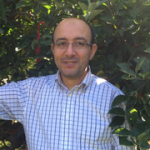By Achour Amiri, WSU Assistant Professor of Pathology
For many years, general spray recommendations preharvest or at harvest were given based on the assumed efficacy of the fungicide. However, some fungicides may not be effective against all pathogens, and different grower lots may exhibit different decay and fungicide resistance profiles based on cultivar susceptibility and history of fungicide sprays. Because different growers or packers can use different fungicide regimes, resistance development can vary from one lot to another.
Recent study shows differences in decay and fungicide resistance profiles across locations
In a study conducted in spring 2015 of over 170 grower lots across all Washington apple and pear growing regions, we observed disparities across locations in terms of fungicide resistance of the blue mold gray mold fungi to thiabendazole (TBZ) and Penbotec. We also observed the emergence of small populations of both fungi that are becoming tolerant to Scholar and related products (formulated with fludioxonil). These tolerant populations are still controlled on fruit by the label rate of Scholar, however, continuous frequent use of this fungicide on tolerant populations will make them become resistant and therefore not controllable by the label rate. Knowing that some of these populations can be resistant to TBZ and Penbotec at the same time, it very crucial to observe caution when choosing what fungicide to spray at harvest to avoid control failure.
Short term strategies
Until long term strategies are developed, two key strategies may help growers get the appropriate or expected efficacy and hopefully slow down the selection for additional resistant populations:
First, know what type of pathogens you have and how frequent resistance occurs in your lot. This will help you make a smart choice for what to spray in the following seasons to get the best efficacy. We are planning to conduct similar studies in the future to better assess the risks in Washington. You can get your lot profiled by sending a sample of decayed fruit to the Pathology lab in Wenatchee.
Second, follow a one year rotation of most effective fungicides to minimize exposure of the pathogen to the same fungicide for more than one season. Some of the new alternative fungicides coming to the market should help initially but our future research will focus on developing best rotation strategies to tackle the problem on long term.
Getting decay and fungicide resistance profile: Starting Mid-January 2017
Contact Dr. Achour Amiri (a.amiri@wsu.edu), 509-663-8181 ext 268.
Contact
Dr. Achour Amiri
509-663-8181 ext 268

